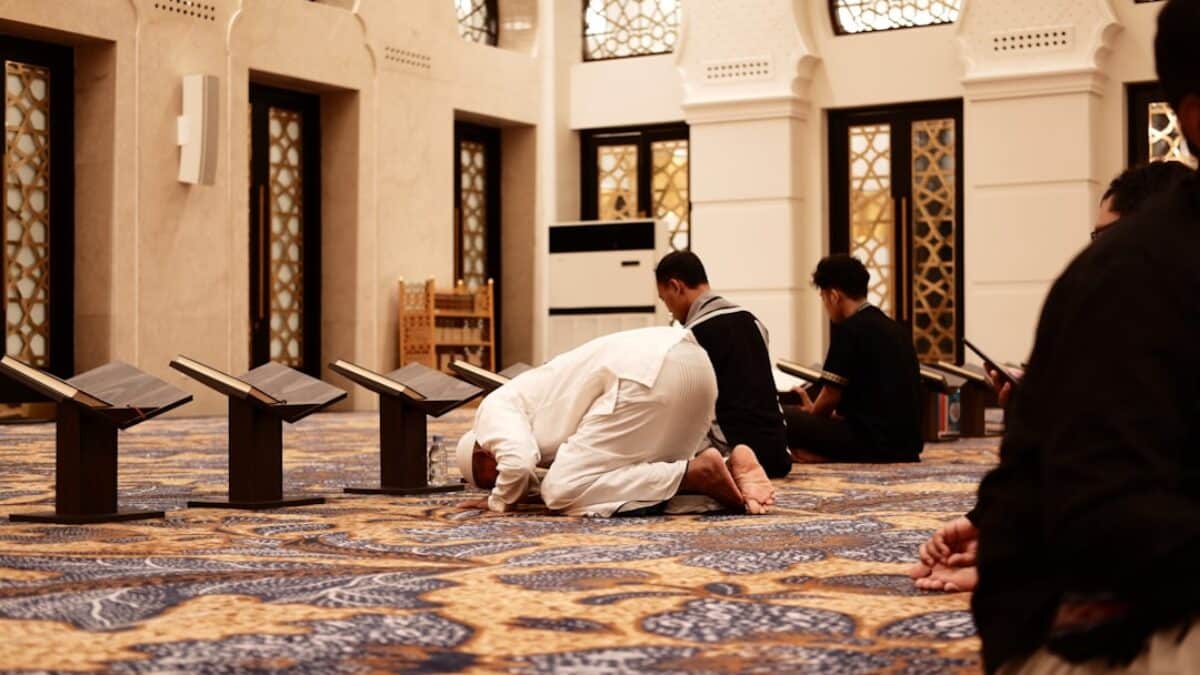The Islamic Janazah prayer—often simply called Salat al-Janazah—is a profound act of worship that embodies the Muslim community’s collective farewell to a deceased believer. It is the only canonical prayer in Islam that contains no bowing (rukuʿ) or prostration (sujud), yet its spiritual weight is immense. When performed correctly, it becomes a powerful plea for mercy, a public testimony to the deceased’s faith, and a communal reaffirmation of Islamic brotherhood and sisterhood.
Understanding the Janazah Prayer
Definition and Linguistic Roots
The Arabic word janāzah literally denotes a bier or funeral procession. Over time it evolved into the technical term for the Islamic funeral prayer. Scholars highlight two complementary meanings:
- Physical dimension: the wrapped body (kafn) and the act of carrying it to the grave.
- Spiritual dimension: the supplications recited by the community seeking Allah’s forgiveness for the deceased and steadfastness for the living.
Because the prayer is fard kifāyah—a communal obligation—if a sufficient number of Muslims perform it, the obligation is lifted from the rest of the community. If no one performs it, the whole locality bears the sin.
Core Theological Purpose
From an ʿaqīdah (creedal) standpoint, the Janazah prayer is:
- An intercession asking Allah to forgive the deceased’s sins.
- A reminder of the Hereafter, reinforcing the transient nature of worldly life.
- A social contract that binds the living to care for the deceased’s family and settle his or her debts.
Key Components of the Janazah Prayer
Preconditions and Prerequisites
Before the prayer can begin, several sharʿi prerequisites must be met:
- Body preparation: The deceased must be ritually washed (ghusl al-mayyit), shrouded (kafn), and—if possible—perfumed.
- Timing: The prayer is valid from the moment death is confirmed until just before burial. Emergency situations, such as mass casualties, may delay the prayer, but never beyond necessity.
- Location: Ideally performed in a prayer area outside the mosque to avoid turning mosques into graveyards. In the West, it can be held in a mosque courtyard or funeral home.
Step-by-Step Methodology
The prayer itself consists of four takbirs (saying Allāhu Akbar) with specific silent supplications between them. Below is the complete sequence.
1. Formation of Rows
- The body—placed on a bier or in a casket—is positioned parallel to the rows of worshippers, head to the right of the imam.
- An odd number of rows is recommended, following the sunnah of the Prophet ﷺ.
- Women may form a separate rear row, though the majority of classical jurists prefer they avoid attending, not out of prohibition but to prevent emotional disruption.
2. Intention (Niyyah)
The imam and each participant silently form the intention: “I intend to perform the salat al-janazah seeking nearness to Allah for the sake of this deceased Muslim.”
3. Opening Takbir & Thanāʾ
After the first takbir, participants recite the opening supplication (thanaʾ) silently:
Subhānak Allāhumma wa bi ḥamdika, wa tabārak asmuka, wa taʿālā jadduka, wa lā ilāha ghayruk.
4. Second Takbir & Ṣalāh upon the Prophet ﷺ
Upon the second takbir, the salat ʿala al-Nabi is recited in any of its approved wordings, the most common being:
Allāhumma ṣalli ʿalā Muḥammad wa ʿalā āli Muḥammad kamā ṣallayta ʿalā Ibrāhīm…
5. Third Takbir & Supplication for the Deceased
After the third takbir, a concise, comprehensive duʿāʾ is offered. The following wording is authentically reported by ʿAwf b. Mālik:
Allāhumma ighfir li-ḥayyinā wa mayyitinā, wa ṣaghīrinā wa kabīrinā…
6. Fourth Takbir & General Supplication
Upon the fourth takbir, another brief duʿāʾ is made, after which the imam concludes with one taslim (salutation) to the right:
As-salāmu ʿalaykum wa raḥmatullāh.
Women’s Participation
While the Hanafi school historically discouraged women from attending, modern scholars note that the Prophet ﷺ allowed Umm ʿAtiyyah and other female companions to perform Janazah prayers. Key etiquettes include:
- Modest attire and subdued behavior.
- Standing behind male rows.
- Refraining from loud lamentation.
Multiple Deceased
If several bodies are present, the most pious—or nearest relative—should be placed closest to the imam. The duʿāʾ is pluralized (e.g., Allāhumma ighfir lahum). Bodies may be arranged in up to three rows side by side, the heads aligned.
Benefits and Importance
Spiritual Rewards
The Prophet ﷺ stated: “Whoever follows a Janazah until the deceased is buried will receive a qirat of reward, and whoever follows it until the prayer is performed will receive two qirats—each equivalent to Uhud’s mountain.” (Bukhari & Muslim)
Social Cohesion
By gathering for the Janazah, the community:
- Demonstrates solidarity with the bereaved.
- Learns collective responsibility for widows, orphans, and creditors.
- Reinforces the egalitarian spirit of Islam: rich and poor alike are shrouded in simple white cloth.
Psychological Healing
Clinical studies in Muslim-majority countries show that attending Janazah prayers reduces complicated grief symptoms by providing:
- Structured ritual closure.
- Peer support networks.
- A shared narrative of life after death.
Practical Applications
Scenario 1: Masjid Courtyard in a Western City
At Toronto’s Jamiʿ Mosque, the imam arranges:
- Pre-announcement via WhatsApp groups: “Janazah for brother Ahmed after Ẓuhr.”
- Traffic flow: cones guide cars to the side entrance; volunteers escort elderly women.
- Livestream for relatives overseas, camera positioned to exclude the body out of respect.
Scenario 2: Hospital Mortuary
When death occurs in a non-Muslim facility:
- The chaplaincy coordinator contacts the local Islamic society within one hour.
- The washing bay is pre-booked; plastic sheets and gloves are labeled with the deceased’s name.
- Funeral home cooperation ensures the body faces the qiblah during the Janazah prayer.
Scenario 3: Mass Casualty Incident
Following an earthquake, scholars issue a collective fatwa allowing:
- Single Janazah for unidentified bodies.
- Use of coffins when digging individual graves is impossible.
- Gender-segregated but simultaneous prayers to accommodate thousands.
Frequently Asked Questions
What is the minimum number of participants required?
According to the majority of jurists, the minimum is one person—even the imam himself. However, the ideal prophetic model is at least forty worshippers, as narrated by Ibn ʿUmar: “No Muslim man dies and forty men who do not associate partners with Allah pray over him, except that Allah will accept their intercession for him.” (Muslim)
Can the Janazah prayer be repeated?
Yes. If the first prayer was held in a distant land, relatives may arrange a second Janazah ʿalā al-ghāʾib (absentee funeral prayer) in their locality. The Prophet ﷺ performed this for Najāshi, the Abyssinian king.
What if the deceased was a child?
The Janazah prayer is recommended for any child who cried after birth—evidence of life. The wording is slightly modified: one may add, “Make him a precedent and stored treasure for his parents.”
Is Janazah valid if the body is cremated?
No. Cremation is strictly prohibited in Islamic law. If the body was cremated against Islamic instructions, the prayer is not performed; instead, absentee prayer is disallowed, and the community focuses on istighfār and advocacy to prevent future incidents.
Can non-Muslims attend or observe?
Non-Muslims are permitted to observe respectfully, but they do not participate in the takbirs or duʿāʾs. Funeral organizers often provide explanatory leaflets to foster interfaith understanding.
What compensation is due if someone misses the Janazah?
There is no financial kaffārah. However, the person should:
- Visit the grave and recite Qur’an.
- Donate charity on the deceased’s behalf.
- Make individual supplication (ʿibādah) for forgiveness.
How do you handle Janazah for a martyr (shahīd)?
A martyr of the battlefield is not washed, shrouded, or prayed over in the conventional sense. The blood-stained garments serve as the shroud. However, modern civilian martyrs (terror-attack victims) are treated like any other Muslim, since the legal definition of shahīd is narrower.
Conclusion
Mastering the step-by-step performance of the Islamic Janazah prayer is not merely a ritual skill; it is a spiritual, social, and ethical obligation that binds the living to the dead and the individual to the community. From forming the opening niyyah to reciting the final taslim, each action is laden with prophetic wisdom and divine reward.
Communities
























Post Comment